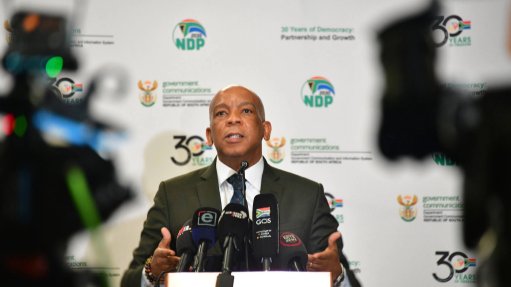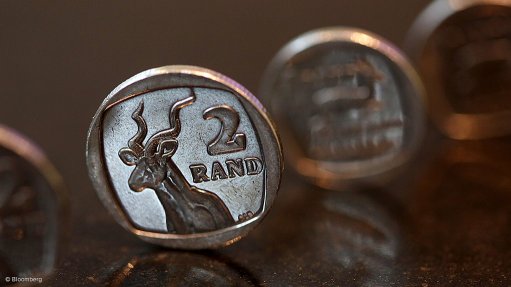We should stop building big power plants. Period!
The current crisis at power utility Eskom is a result of policy decisions made during and after apartheid. Faulty energy paradigms, political interference and a corporatist mentality have ensured that Eskom has lost its public-good compass. One entity alone has continued and continues to create systemic stress, plummeting the country into a state of despair. When the Eskom ship sinks, we all sink. Eskom, as we know now, is a dark hole sucking capital dry, not saving or generating it.
During apartheid, plant oversupply encouraged a moral hazard: Eskom entered into a number of very secretive long-term contracts with various energy-intensive users, guaranteeing them cheap electricity for decades. Sweetheart deals rendered it impossible for Eskom to embark on full cost recovery. When energy demand grew and new plants were required, Eskom was unable to generate additional capital from these energy-intensive users, who collectively account for the bulk of consumption. This, plus a false sense of comfort based on Eskom’s balance sheet surpluses, resulted in delayed cost recovery from incrementally instituted tariffs. When demand grew, Eskom was forced to incur additional debt or look for State bail-outs to build new capacity.
In the post-1994 period, uncertainty regarding Eskom’s future – whether it should be privatised, how the State should manage its generation, transmission and distribution assets, as well as its coal infrastructure – put a break on further investment in new generation capacity. At the same time, however, government embarked on a massive electrification programme to supply electricity to millions of South Africans who had lived in the dark under apartheid. Thus, while demand was growing rapidly, new capacity had stalled.
With major power shortages in 2007, a decision was taken to build two new coal-fired plants, Medupi and Kusile, to meet growing demand. These two power stations are expected to add about 9 600 MW to the country’s electricity system, the equivalent of 25% of South Africa’s 2009 generating capacity. However, like most bulk infrastructure projects, Medupi and Kusile, have experienced major delays, technical challenges, massive cost overruns and questionable procurement choices.
Medupi was expected to be fully operational by 2015, but only one of its six 800 MW boilers is partially operational. The plants will only be fully operational in 2021. These delays have not only resulted in a severely constrained electricity system but are also costing the country billions of rands in cost overruns. Eskom’s cost overruns are now triple the initial estimates.
The delays in completing Medupi have led to other problems: Eskom is running existing plants to capacity, putting strain on existing infrastructure and limiting the utility’s ability to conduct routine maintenance. These plants are already operating at 70% plant availability rather than 90%. Further, seriously low electricity supply reserves are forcing Eskom to run diesel generators to support baseload generation. In normal conditions, diesel generators are only used to supplement supply during peak periods.
Not surprisingly, Eskom’s diesel costs have shot up from around R2-billion a year to almost R10-billion. Further, questions are being raised in the media about potential middlemen and women (including dentists and beauticians) who are benefiting substantially from Eskoms diesel procurement.
A host of other factors, such as inflated salaries, unjustifiable perks for a crisis-ridden organisation, lavish family parties, increasingly high coal costs owing to black economic-empowerment obligations, ageing infrastructure, high maintenance costs and other inefficiencies, are making it difficult for Eskom to run a cost-effective utility. This does not factor in all the governance issues clouding Eskom.
In the meantime, Eskom is given a further bail-out of R20-billion by the National Treasury. But this bail-out comes with the condition that Eskom recover the R9-billion owed to it by various municipalities. These municipalities – mostly with poor constituencies – will struggle to recoup this debt. The ironic result is that many poor households, electrified after the end of apartheid, will have their supply cut off.
Eskom is relying on its State guarantee of R250-billion to borrow money from the market. However, because its credit ratings are close to junk bonds, it has to pay more interest on loans every time it borrows. This, in turn, means that the more that Eskom borrows, the more consumers will have to fork out for electricity.
One obvious lesson from the Eskom debacle is that we should stop building large plants. Period! Renewable energy and smaller gas plants, done on a modular basis, can fill the gap between demand and supply in a relatively short period and at lower costs. Ironically, the delays at Medupi have resulted in wind and solar (based on the later rounds of the Renewable Energy Independent Power Producers Procurement Programme, coming in at a lower kilowatt cost than Medupi’s coal-generated electricity.
Although the independent power producers (IPPs) have delivered cheaper renewables than expected, they do present their own challenges that need to be resolved. In future, it is likely that there will be a consolidation of the IPPs in South Africa through buyouts by large foreign utilities, which already have a presence in our market.
Further, because of the nature of foreign direct investment, there is leakage and transfer of capital out of the domestic economy – all in foreign currency. This will raise concerns about the balance of payments. The current IPP procurement model is also not structured in a way that will deliver lasting and deep localisation and manufacturing for the country.
These are all questions that need to be resolved. Ideally, Eskom should be building renewable-energy capacity. Its rate of return on capital invested is lower, which means the utility can build renewable-energy plants more cheaply than private IPPs, which, in turn, bring down the cost of renewable energy further.
Also, space for municipalities and others forms of publicly and community owned generation plants should be given serious consideration, including expanding rooftop solar water heaters and photovoltaic options. The regulatory and financial uncertainties regarding municipalities’ self-generation and households feeding into the grid must be resolved.
Article Enquiry
Email Article
Save Article
Feedback
To advertise email advertising@creamermedia.co.za or click here
Comments
Press Office
Announcements
What's On
Subscribe to improve your user experience...
Option 1 (equivalent of R125 a month):
Receive a weekly copy of Creamer Media's Engineering News & Mining Weekly magazine
(print copy for those in South Africa and e-magazine for those outside of South Africa)
Receive daily email newsletters
Access to full search results
Access archive of magazine back copies
Access to Projects in Progress
Access to ONE Research Report of your choice in PDF format
Option 2 (equivalent of R375 a month):
All benefits from Option 1
PLUS
Access to Creamer Media's Research Channel Africa for ALL Research Reports, in PDF format, on various industrial and mining sectors
including Electricity; Water; Energy Transition; Hydrogen; Roads, Rail and Ports; Coal; Gold; Platinum; Battery Metals; etc.
Already a subscriber?
Forgotten your password?
Receive weekly copy of Creamer Media's Engineering News & Mining Weekly magazine (print copy for those in South Africa and e-magazine for those outside of South Africa)
➕
Recieve daily email newsletters
➕
Access to full search results
➕
Access archive of magazine back copies
➕
Access to Projects in Progress
➕
Access to ONE Research Report of your choice in PDF format
RESEARCH CHANNEL AFRICA
R4500 (equivalent of R375 a month)
SUBSCRIBEAll benefits from Option 1
➕
Access to Creamer Media's Research Channel Africa for ALL Research Reports on various industrial and mining sectors, in PDF format, including on:
Electricity
➕
Water
➕
Energy Transition
➕
Hydrogen
➕
Roads, Rail and Ports
➕
Coal
➕
Gold
➕
Platinum
➕
Battery Metals
➕
etc.
Receive all benefits from Option 1 or Option 2 delivered to numerous people at your company
➕
Multiple User names and Passwords for simultaneous log-ins
➕
Intranet integration access to all in your organisation


















